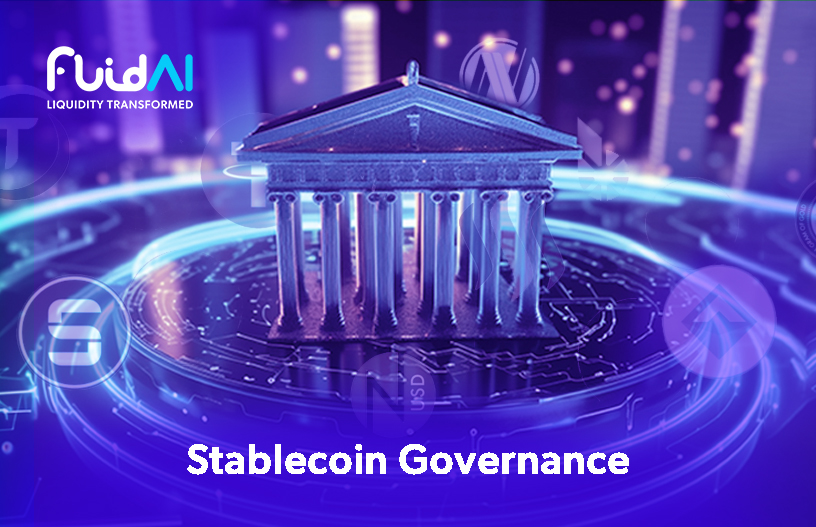
Stablecoin Governance: Examining Decision-Making Processes Behind Stablecoin Parameters and Management
Stablecoin Governance: Explore the decision-making intricacies governing stablecoin parameters and management, examining their pivotal role in ensuring stability and value preservation within the cryptocurrency ecosystem.

Stablecoin Governance: Examining Decision-Making Processes Behind Stablecoin Parameters and Management
Stablecoins have emerged as a critical component of the cryptocurrency ecosystem, offering stability in an otherwise volatile market. These digital assets are designed to maintain a consistent value by pegging themselves to a reserve of assets, typically fiat currencies or commodities like gold. However, the key to the success of stablecoins lies not just in their technology but in the governance structures that guide their operation. In this blog post, we will delve into the intricate world of stablecoin governance, shedding light on the decision-making processes behind stablecoin parameters and management.
The Importance of Governance in Stablecoins
Stablecoins are only as strong as their governance mechanisms. Unlike traditional cryptocurrencies, where consensus mechanisms and code prevail, stablecoins rely on human decision-making to maintain their peg to a specific value. Governance becomes paramount as it ensures transparency, stability, and the ability to adapt to changing market conditions.
Parameters Definition
The heart of stablecoin governance lies in defining and maintaining crucial parameters. These parameters include the pegged asset, the collateralization ratio, and the mechanisms for minting and burning tokens. These decisions determine the stablecoin’s reliability and its ability to maintain its value.
- Pegged Asset: This is the asset to which the stablecoin is pegged or anchored. Stablecoins are designed to maintain a stable value in relation to this asset. Common pegged assets include:
– Fiat Currency: Stablecoins can be pegged to a specific fiat currency like the US Dollar (USD), Euro (EUR), or others.
– Cryptocurrency: Some stablecoins are pegged to cryptocurrencies like Bitcoin (BTC) or Ethereum (ETH).
– Commodity: In rare cases, stablecoins may be pegged to a commodity like gold or a basket of commodities. - Collateralization Ratio: This ratio represents the amount of collateral that must be locked up to support the issuance of stablecoins. It ensures that the stablecoin maintains its value by being fully backed by assets of value. The collateralization ratio can vary significantly from one stablecoin to another. A higher ratio typically implies greater stability but may limit the supply of stablecoins.
- Minting Mechanism: This defines the process by which new stablecoins are created or “minted.” The minting mechanism is usually tied to the deposit of collateral. Users provide collateral, and in return, they receive a corresponding amount of stablecoins. This process ensures that the stablecoin is backed by real assets.
- Burning Mechanism: The burning mechanism outlines how stablecoins are removed from circulation or “burned.” Users can typically burn their stablecoins to retrieve the collateral they initially deposited. This process helps regulate the supply of stablecoins and maintain the peg.
- Governance Mechanisms: Stablecoins may incorporate various governance mechanisms to make decisions regarding parameter adjustments, upgrades, and other changes. These mechanisms often involve token holders voting on proposals and may include features like decentralized autonomous organizations (DAOs).
- Oracle Systems: To accurately maintain the peg, stablecoins rely on price information from external sources, known as oracles. Oracle systems feed real-world asset prices into the smart contracts governing the stablecoin. The choice of oracles and their reliability is a critical parameter.
- Fee Structures: Stablecoins may implement fees for minting, burning, or other actions. These fees can serve various purposes, such as covering operational costs, incentivizing certain behaviors, or providing stability.
- Reserve Management: Decisions on how the collateral reserves are managed, invested, or diversified are essential for ensuring the stability and long-term viability of the stablecoin.
- Emergency Mechanisms: In extreme situations where the peg is at risk, stablecoins may have emergency mechanisms in place, such as global settlement or circuit breakers, to maintain stability.
- Upgradeability: The ability to upgrade the smart contracts and parameters of the stablecoin is an important consideration. It allows for adjustments to adapt to changing market conditions and technology.
- Transparency and Audits: Transparency in reporting collateral holdings and regular audits are crucial to building trust in the stablecoin system.
- Risk Management: Assessing and mitigating risks associated with the collateral assets, smart contracts, and other factors is a fundamental aspect of stablecoin governance.
Each of these parameters is carefully defined and maintained by the stablecoin’s governing body, which could be a centralized organization, a decentralized community, or a combination of both, depending on the stablecoin’s design and governance model. The effectiveness of these parameters is critical in ensuring the stability and reliability of the stablecoin.
Decision-Making Processes
Stablecoin governance typically involves a multi-layered decision-making process. Participants may include token holders, developers, validators, and external experts. Decisions can be made through various mechanisms:
- Token Voting: Some stablecoins grant voting rights to token holders. These votes can determine changes to parameters or even protocol upgrades. However, token-based governance may be susceptible to whales and manipulation.
- Developer Governance: Developers often play a central role in making technical decisions. They may have significant influence over the codebase and can propose changes that impact the stablecoin’s parameters.
- Multi-Signature Wallets: Multi-signature wallets controlled by a group of trusted individuals or organizations can make key decisions regarding the stablecoin’s operation. This approach aims to strike a balance between decentralization and control.
Challenges in Stablecoin Governance
Stablecoin governance is not without its challenges. Some of the most pressing issues include:
- Decentralization vs. Efficiency: Striking the right balance between decentralization and efficiency is a constant challenge. While decentralized governance can prevent undue concentration of power, it can also lead to slow decision-making processes.
- Whale Influence: Token-based voting can be manipulated by large token holders, undermining the principle of equal participation.
- Regulatory Concerns: Stablecoins are under increasing scrutiny by regulators. Governance structures must evolve to ensure compliance with relevant laws without compromising the core principles of decentralization and transparency.
Examples of Stablecoin Governance
Let’s examine a couple of examples of stablecoin governance in action:
- MakerDAO: MakerDAO, the organization behind the DAI stablecoin, employs a decentralized autonomous organization (DAO) model for governance. Token holders vote on proposals to change collateral types, debt ceilings, and stability fees, among other parameters.
- USDC: USD Coin (USDC), another popular stablecoin, relies on a consortium of regulated financial institutions to issue and manage the stablecoin. This approach emphasizes regulatory compliance and stability but may be less decentralized.
Stablecoin governance is a critical element in the success and stability of these digital assets. Decision-makers must navigate the complexities of parameter definition, decision-making processes, and the ever-evolving regulatory landscape. Striking the right balance between decentralization, efficiency, and transparency is a continuous challenge that will shape the future of stablecoins. As the cryptocurrency ecosystem matures, stablecoin governance will likely continue to evolve, offering valuable lessons for the broader blockchain space.













